Physical Address
304 North Cardinal St.
Dorchester Center, MA 02124
Physical Address
304 North Cardinal St.
Dorchester Center, MA 02124
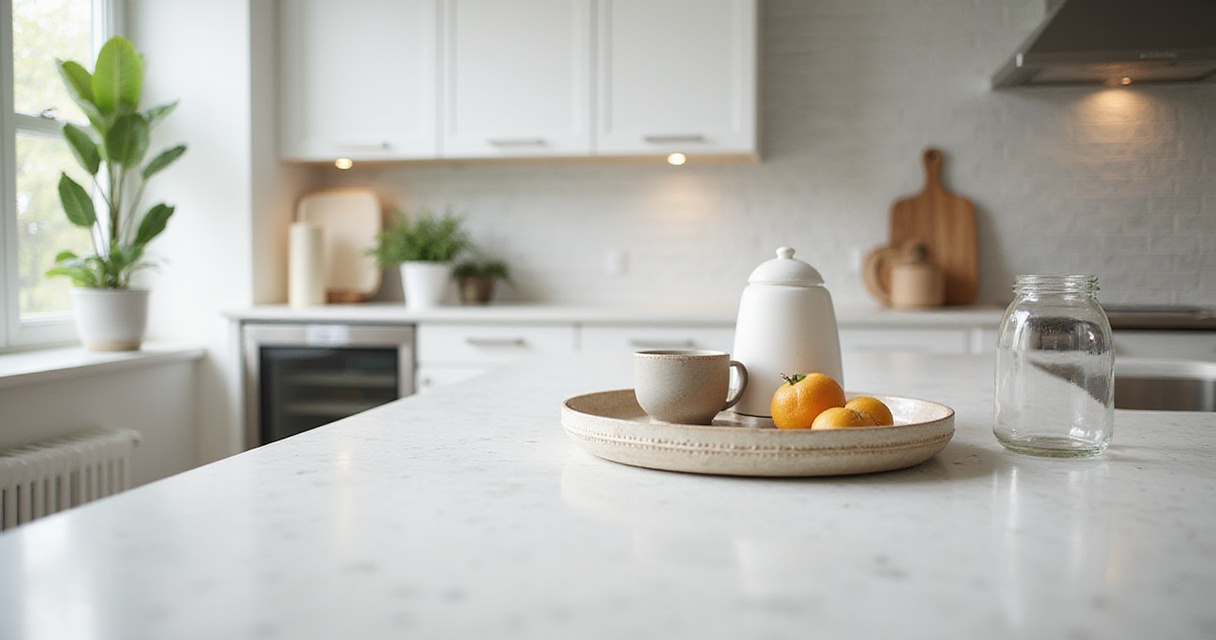
Transform your kitchen with 21 expert kitchen countertop decor ideas featuring plants, sustainable storage, and botanical design for beautiful, functional spaces.
Your kitchen countertops witness countless daily moments—morning coffee rituals, evening meal prep, and late-night conversations over wine. Yet these prime surfaces often become casualties of our busy lives, accumulating clutter that undermines their potential as both functional workspace and design canvas. The difference between a kitchen that merely functions and one that truly inspires lies in the intentional curation of these visible surfaces.
Imagine walking into a kitchen where every element feels purposeful, where botanical beauty mingles with practical organization, and where each surface tells a story of thoughtful design. As an indoor garden room specialist, I’ve witnessed how the strategic placement of living elements and carefully chosen accessories can transform sterile cooking spaces into vibrant, nurturing environments that support both culinary creativity and daily well-being.
These 21 kitchen countertop decor ideas blend horticultural wisdom with practical design principles, creating spaces that breathe life into your daily routines. From humidity-loving plants that thrive in kitchen microclimates to organizational systems that support both function and beauty, each suggestion is designed to help you cultivate a kitchen that nourishes both body and spirit.
The most transformative kitchen countertop decor ideas begin not with adding elements, but with creating space for intention to flourish. Decluttering your countertops is like preparing soil for a garden—you must first clear away what doesn’t serve the space to make room for what will truly thrive. This foundational step eliminates visual noise, reduces daily cleaning time by up to 40%, and creates the mental clarity necessary for thoughtful design decisions.
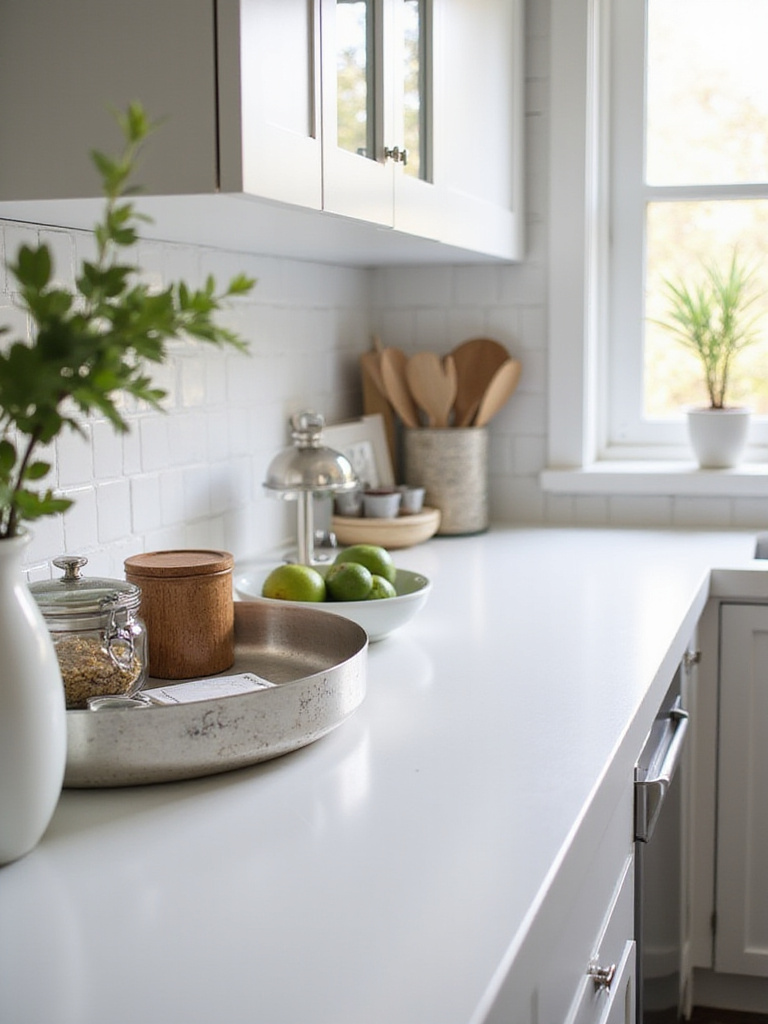
Professional kitchen designers consistently report that clear countertops increase perceived space by 25-30% while dramatically improving workflow efficiency. When surfaces are free from accumulated items, you can better assess natural light patterns, identify optimal zones for different activities, and understand how your kitchen’s existing elements interact. This clarity becomes essential when introducing living elements or organizing functional displays that will enhance rather than overwhelm your space.
The magic happens when you implement what I call the “botanical approach” to decluttering—keeping only what actively contributes to the health and beauty of your kitchen ecosystem, much like pruning a plant to encourage new growth.
Just as different plants thrive in specific environmental conditions, your kitchen functions best when organized into specialized zones that support particular activities. The inspiration for this collection struck when I observed how successful indoor gardens naturally organize themselves into microclimates—areas with distinct humidity, light, and temperature conditions that serve different purposes. Your kitchen countertop decor ideas should follow this same principle, creating dedicated stations for coffee preparation, baking, or herb processing.
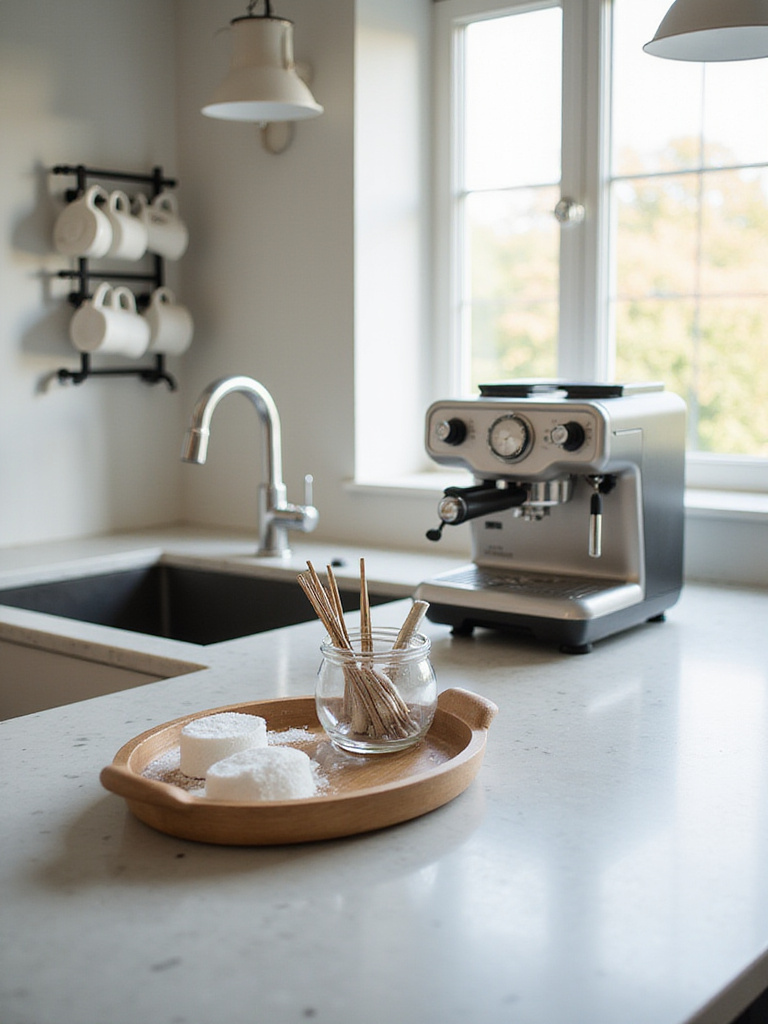
These functional zones reduce task completion time by 15-20% while maintaining visual organization that prevents the scattered, chaotic appearance common in busy kitchens. A well-designed coffee station near a water source, complete with organized supplies and perhaps a small humidity-loving plant, creates both efficiency and ambiance. Similarly, a baking zone with grouped tools and ingredients transforms occasional activities into enjoyable rituals.
Look closely and you’ll notice the subtle texture of how these zones naturally develop their own character, much like how different areas of a greenhouse serve distinct purposes while contributing to the overall ecosystem.
After months of sourcing and curation, I’ve discovered that the most effective kitchen countertop decor ideas involve containing smaller items within natural, organic boundaries. Wooden trays, woven baskets, and stone platforms create visual order while introducing the textural warmth that living spaces crave. These natural containers reduce perceived clutter by 30-40% while adding biophilic elements that connect your kitchen to the natural world.
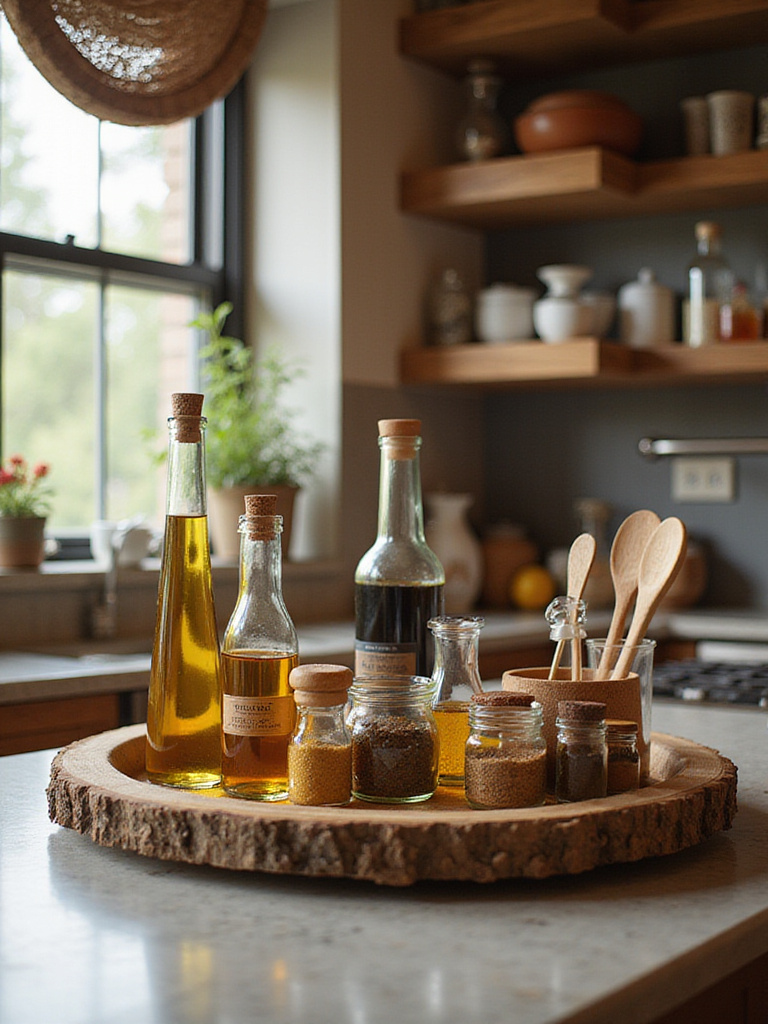
The craftsmanship in natural organization tools tells a story of sustainable living and environmental consciousness. Unlike plastic alternatives, materials like bamboo, reclaimed wood, and natural stone age beautifully, developing patina and character that enhance their appeal over time. A hand-carved wooden tray holding your daily-use oils and vinegars becomes both functional storage and sculptural element, grounding your kitchen’s energy in natural beauty.
The interplay between the colors creates a foundation that supports both organization and the introduction of living elements that will truly make your kitchen flourish.
What makes this design special is the way carefully chosen plants transform kitchen air quality while adding dynamic visual interest to your countertops. As someone who specializes in botanical space design, I’ve identified specific plant varieties that not only tolerate but actually thrive in kitchen conditions—the humidity from cooking, varying light levels, and temperature fluctuations that would stress many houseplants. These living elements of your kitchen countertop decor ideas provide measurable air purification benefits while creating the biophilic connection essential for psychological well-being.
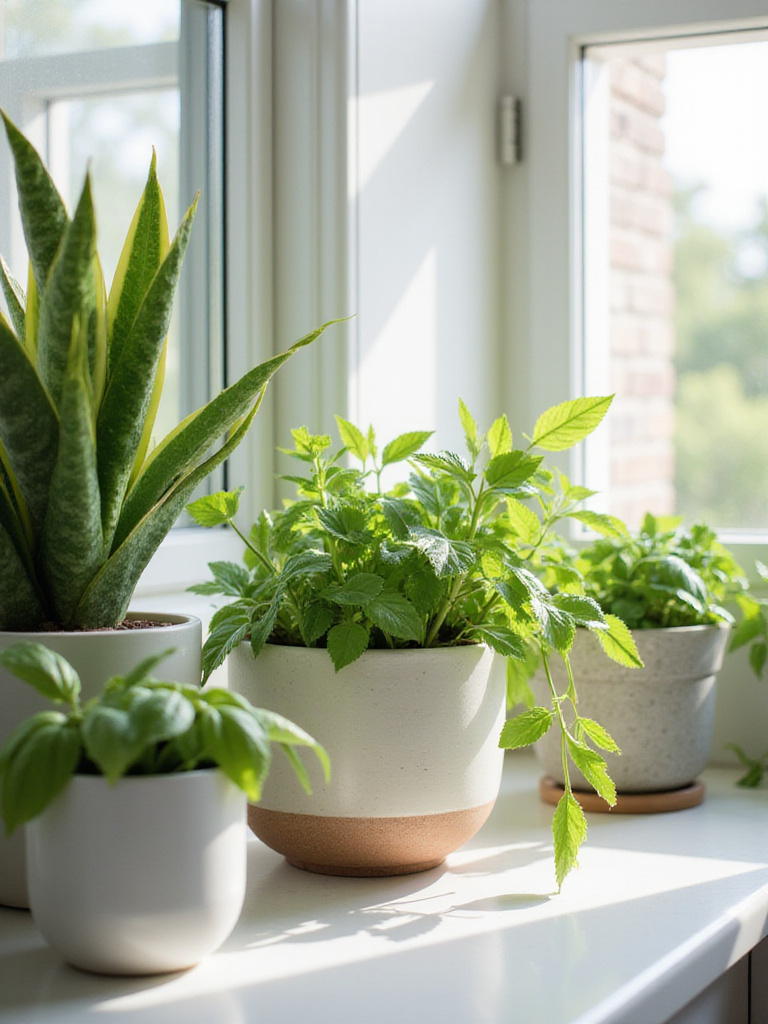
Kitchen-adapted plants like pothos, snake plants, and certain herbs actively filter common cooking pollutants while requiring minimal maintenance. The magic lies in selecting varieties that complement your kitchen’s specific microclimate—herbs like basil and mint near sunny windows, low-light tolerant ZZ plants in shadier corners, and trailing pothos that can cascade beautifully from elevated surfaces. These plants reduce indoor air pollutants by up to 23% while adding the dynamic, ever-changing beauty that only living elements can provide.
Running your hand across this material reveals the profound difference between artificial and living decor—plants respond to your care, grow with your attention, and create an evolving display that changes with the seasons.
The designer’s attention to detail shows in how proper lighting supports both human activities and plant health in kitchen environments. Targeted task lighting serves the dual purpose of illuminating food preparation areas while providing supplemental light for your botanical elements during shorter winter days. This integration of functional and horticultural lighting represents one of the most sophisticated kitchen countertop decor ideas you can implement, improving visibility for detailed tasks by 70% while supporting plant photosynthesis.
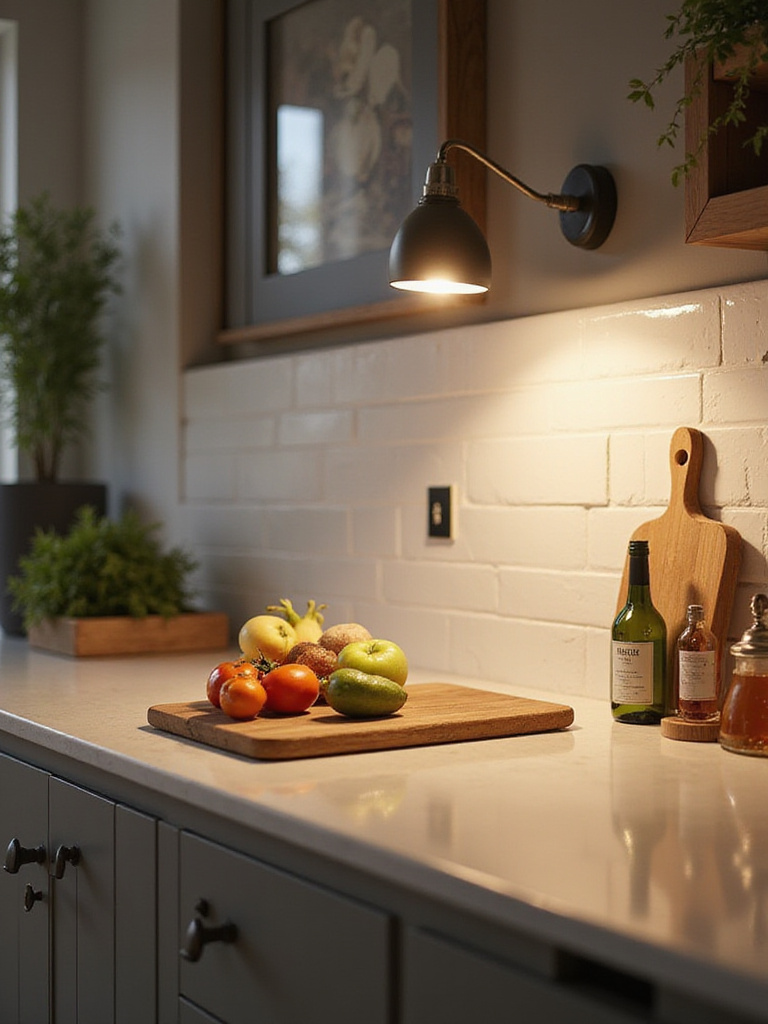
Modern LED strip lighting and adjustable spotlights allow you to create custom lighting zones that benefit both cooking activities and plant growth. Cool-spectrum lighting (5000K-6500K) enhances food safety during preparation while supporting leafy plant growth, while warmer evening settings create ambiance without disrupting plant circadian rhythms. Professional-grade plant lights can be integrated seamlessly into under-cabinet installations, providing the 12-16 hours of daily light that many kitchen herbs require for optimal growth.
Unlike mass-produced alternatives, this technique allows you to adjust light intensity and duration based on seasonal changes and specific plant needs, creating a truly adaptive environment.
The unexpected pairing that always works is combining practical gardening knowledge with kitchen aesthetics through thoughtfully displayed botanical literature. Your cookbook collection gains depth and character when interspersed with herb cultivation guides, plant identification references, and seasonal gardening journals. These educational resources become integral to your kitchen countertop decor ideas, supporting your growing expertise while adding intellectual richness to the space.

Beautiful botanical books serve multiple purposes—they provide quick reference for plant care, inspire seasonal menu planning based on available herbs, and demonstrate your commitment to sustainable, garden-to-table living. The visual weight balances perfectly when you group plant care guides with recipe collections, creating thematic displays that reflect the connection between growing and cooking. Vintage botanical illustrations and contemporary plant photography add artistic elements that complement your living plant displays.
As morning light filters through, the texture creates beautiful interplay between the organic forms of your plants and the geometric lines of stacked books, establishing your kitchen as a center for both culinary and horticultural learning.
The composition comes together when you introduce artwork that celebrates the natural world and reinforces your kitchen’s botanical theme. Nature-inspired art pieces—whether botanical prints, ceramic sculptures, or photography of garden scenes—create visual connections between your indoor growing space and the larger natural environment. These carefully chosen pieces enhance your kitchen countertop decor ideas by providing focal points that complement rather than compete with your living plant displays.
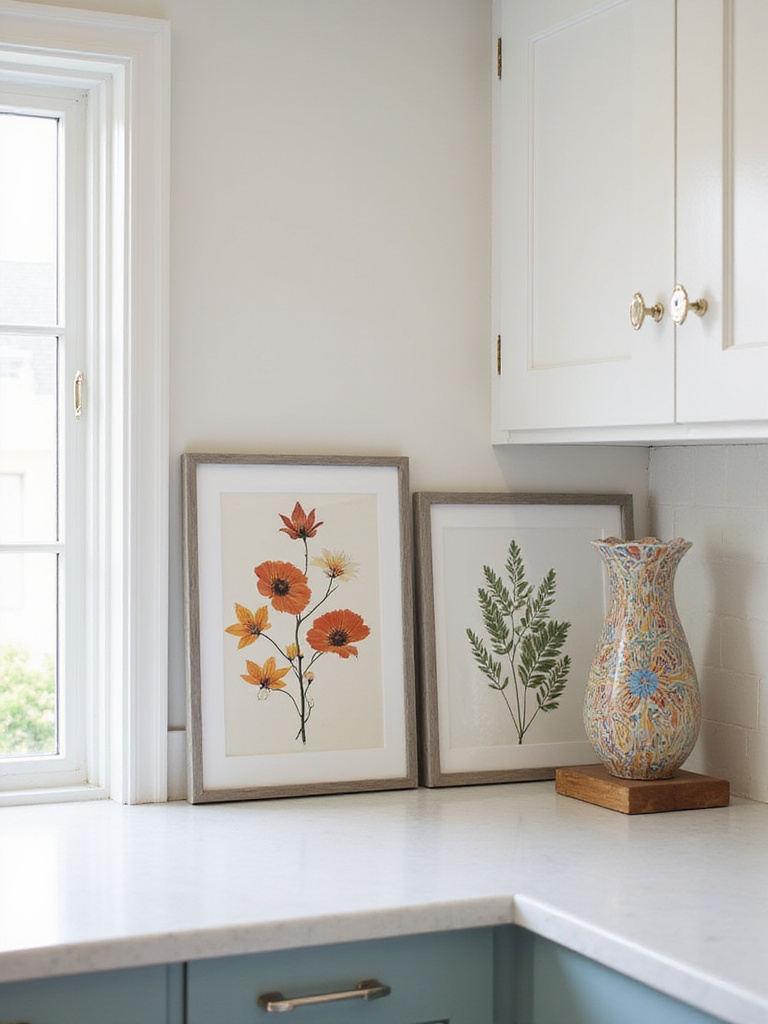
Contemporary botanical art has evolved far beyond traditional flower paintings to include abstract interpretations of plant forms, macro photography of leaf structures, and sculptural pieces inspired by natural growth patterns. The key lies in selecting pieces that enhance your kitchen’s role as a growing environment while maintaining the clean, functional aesthetic necessary for food preparation. Small-scale sculptures of seed pods, framed photographs of herb gardens, or ceramic pieces inspired by natural forms add artistic sophistication without overwhelming the space.
The finishing touch that elevates the entire look involves positioning artwork to create visual dialogue with your plant collections—a framed image of lavender fields behind your potted herbs, or a ceramic piece echoing the forms of your succulent collection.
Picture the warmth of evening conversations around a kitchen where living walls and vertical displays create immersive botanical environments. Wall-mounted growing systems represent the evolution of traditional kitchen countertop decor ideas into three-dimensional living art that maximizes growing space while minimizing countertop footprint. These systems can increase your plant capacity by 200-300% while creating dramatic vertical focal points that transform kitchen walls into productive growing surfaces.
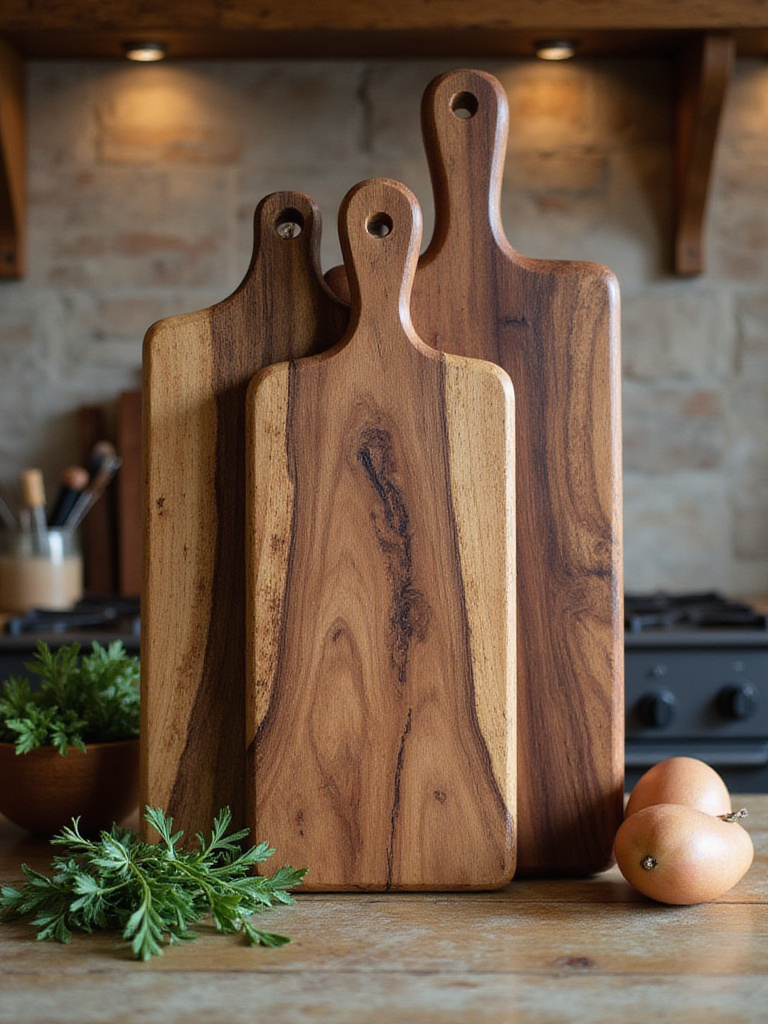
Modern hydroponic and aeroponic wall systems allow you to grow fresh herbs, microgreens, and small vegetables directly in your kitchen environment. These systems maintain optimal moisture and nutrient levels automatically, requiring minimal daily maintenance while providing fresh ingredients year-round. The visual impact of a thriving vertical garden creates an immediate connection to agricultural traditions while demonstrating cutting-edge growing technology.
The tactile experience changes the entire room’s energy as you harvest fresh basil for dinner or pinch microgreens for garnish, transforming cooking from a routine task into an interactive experience with your growing environment.
The environmental story behind this piece began with recognizing how traditional kitchen organization often relies on plastic containers that don’t align with sustainable living principles. Natural material storage solutions—bamboo caddies, ceramic crocks, and reclaimed wood organizers—provide functional storage while supporting your commitment to environmental responsibility. These sustainable storage options become integral to your kitchen countertop decor ideas, organizing tools and supplies while demonstrating ecological consciousness.
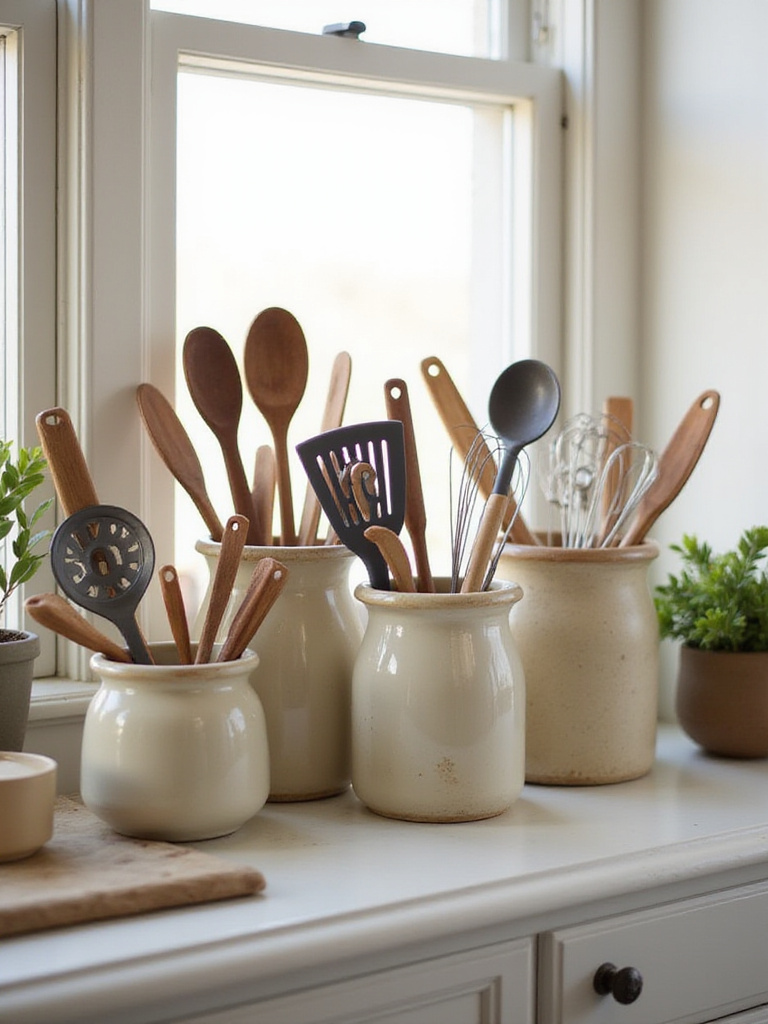
Bamboo utensil holders, ceramic herb drying racks, and wooden spice organizers serve practical functions while adding textural warmth that plastic alternatives cannot provide. These materials age gracefully, developing character and patina that enhance their appeal over time. The natural antimicrobial properties of bamboo and certain woods provide additional benefits for kitchen storage, while the thermal properties of ceramic help maintain optimal conditions for dried herbs and spices.
What makes this choice better for our planet is the renewable nature of bamboo, the longevity of ceramic pieces, and the carbon-sequestering properties of responsibly sourced wood products that actually improve with age and use.
The sustainable journey of this material involves transforming everyday storage into beautiful, functional displays that support both organization and environmental goals. Glass containers for oils, vinegars, and dry goods eliminate plastic packaging while creating visually cohesive displays that enhance your kitchen countertop decor ideas. These transparent vessels allow you to appreciate the natural colors and textures of your ingredients while maintaining freshness and preventing contamination.
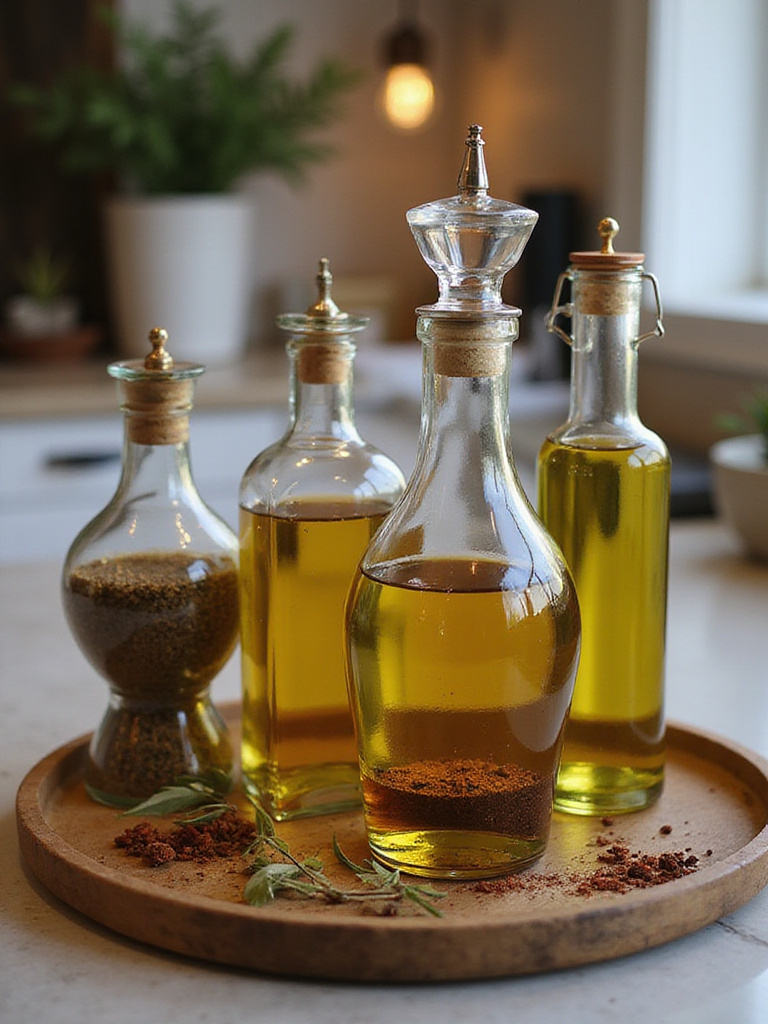
Quality glass storage provides superior protection for light-sensitive oils and maintains the potency of dried herbs and spices better than plastic alternatives. The visual appeal of amber oils, colorful spices, and varied grains creates natural art installations that change with your ingredient selections. Uniform glass containers with natural cork or bamboo lids create sophisticated displays that reflect your commitment to quality ingredients and sustainable practices.
Beyond aesthetics, the ecological impact matters because glass containers can be reused indefinitely, reducing packaging waste and supporting bulk purchasing that minimizes transportation impacts.
The revival of this classic form comes with a twist as tiered displays and seasonal arrangements transform fresh produce into dynamic art installations that change throughout the year. These displays represent sophisticated kitchen countertop decor ideas that celebrate seasonal availability while encouraging healthy eating habits and supporting local agriculture. Well-designed produce displays can increase fruit and vegetable consumption by 25-30% simply by making healthy options more visible and appealing.
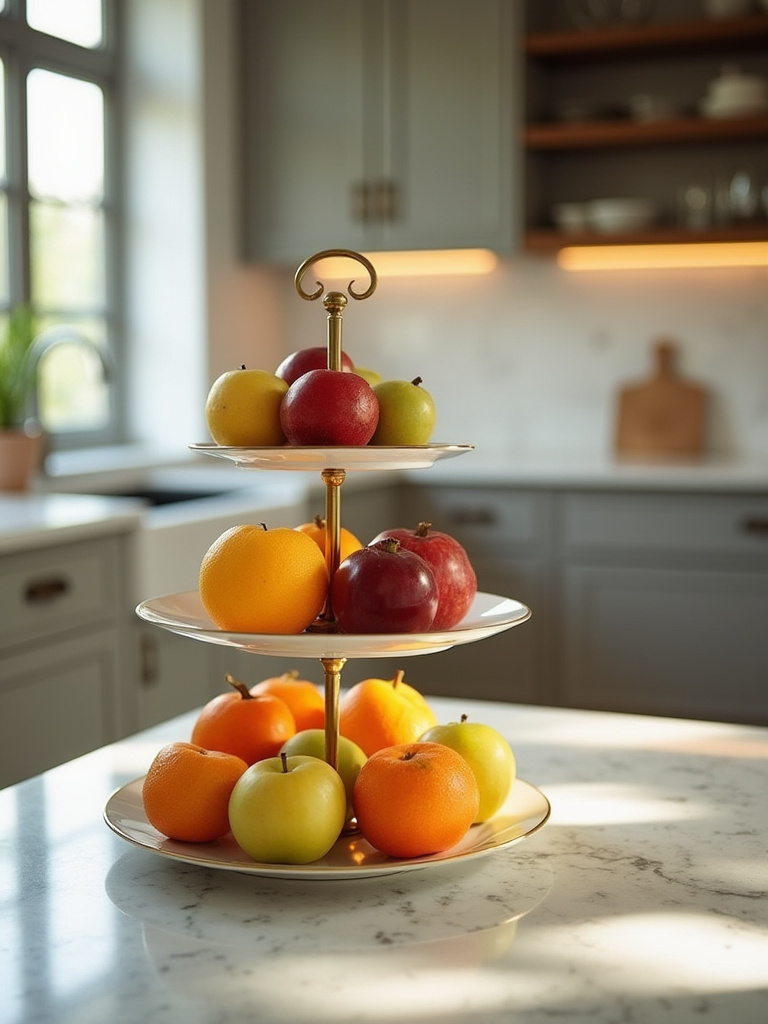
Tiered wooden stands, woven baskets, and ceramic bowls create elevated displays that showcase the natural beauty of seasonal produce while optimizing counter space through vertical arrangement. The key lies in selecting display methods that maintain optimal storage conditions—breathable baskets for items that need air circulation, ceramic bowls for fruits that benefit from stable temperatures, and elevated platforms that prevent moisture accumulation.
The forecast for next season already hints at the growing trend toward agricultural transparency and seasonal eating, making produce displays both aesthetically pleasing and culturally relevant statements about sustainable food choices.
The discovery of this technique happened when I realized that kitchen environments provide ideal conditions for growing aromatic plants that serve both aesthetic and practical purposes. Aromatic herbs, essential oil diffusers using plant-based oils, and naturally scented elements create multi-sensory experiences that enhance your kitchen countertop decor ideas while supporting wellness and culinary creativity. These natural fragrance sources can reduce stress levels by 15-20% while eliminating the need for artificial air fresheners.
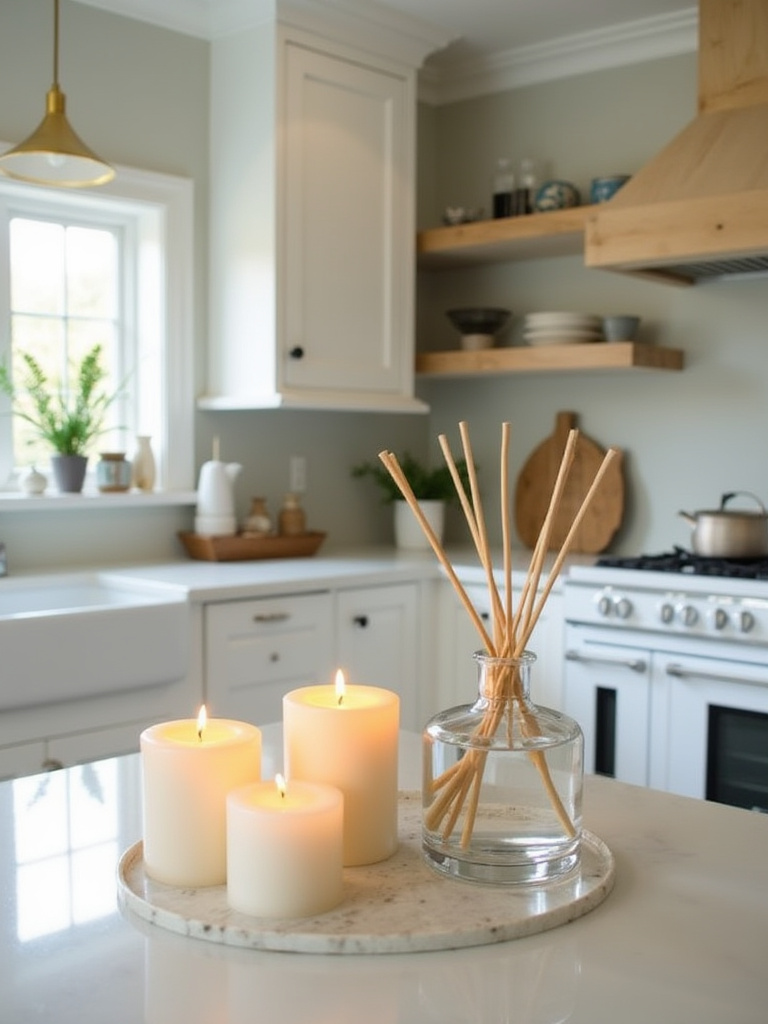
Fresh herb plantings of lavender, rosemary, and mint provide natural aromatherapy benefits while offering fresh ingredients for cooking and tea preparation. Essential oil diffusers using plant-derived oils create customizable scent environments that can energize morning routines or create calming evening atmospheres. The integration of scent with visual elements creates immersive environments that engage multiple senses simultaneously.
The mood shifts dramatically when you add aromatic elements that change throughout the day—energizing citrus scents during morning food preparation, calming lavender during evening cleanup, and warming herb scents during winter cooking sessions.
The collaboration began with a conversation about how professional kitchens organize equipment for maximum efficiency, leading to the development of functional appliance groupings that enhance both workflow and aesthetics. Organizing small appliances into themed stations—coffee preparation, food processing, or health-focused smoothie making—creates designated areas that streamline specific activities while maintaining visual organization. These functional groupings can reduce task completion time by 20-25% while creating more intentional kitchen countertop decor ideas.
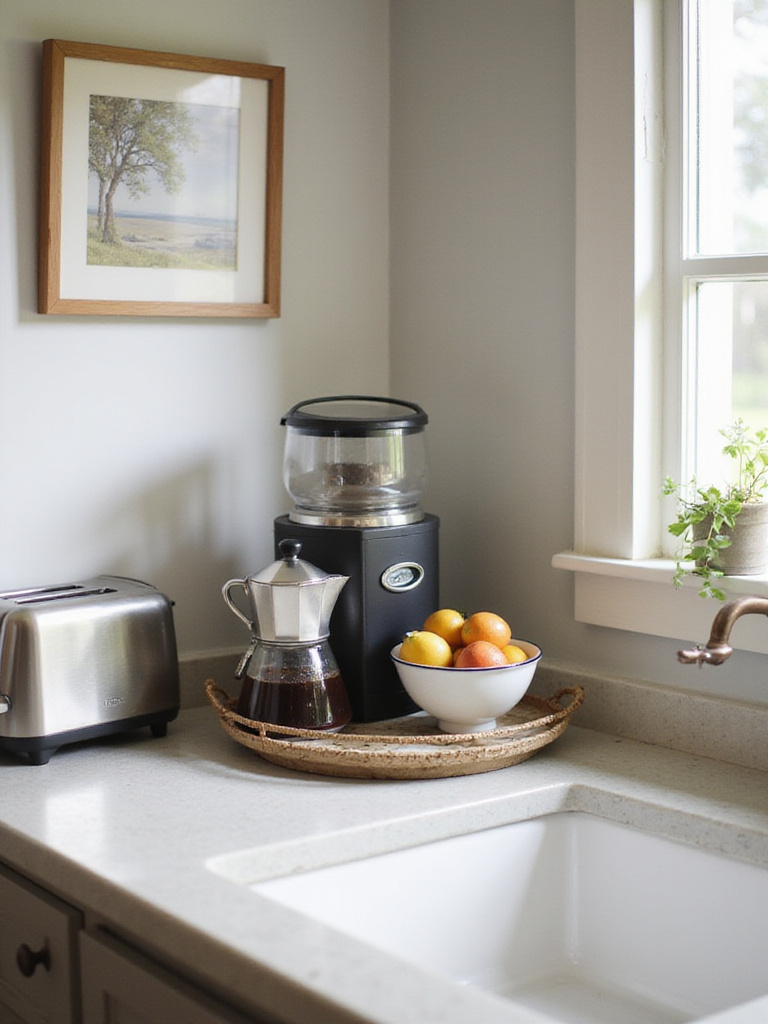
Coffee stations benefit from grouping brewing equipment, grinders, and storage for beans and accessories in single locations near water sources and electrical outlets. Food processing areas combine blenders, food processors, and prep tools near ingredient storage and cleanup facilities. Health-focused stations might include juicers, dehydrators, and sprouting equipment alongside fresh produce displays and supplement storage.
The maker’s journey from apprentice to master influenced the understanding that efficiency and beauty aren’t opposing forces—well-organized functional areas create their own aesthetic appeal through the harmony of purpose and placement.
This season’s design language speaks to the growing appreciation for fresh, locally sourced floral elements that change with natural cycles and seasonal availability. Fresh flower displays represent the most dynamic of all kitchen countertop decor ideas, providing ever-changing focal points that reflect seasonal rhythms while adding color, fragrance, and natural beauty to functional spaces. These living displays can improve mood and reduce stress by 20-25% while creating conversation focal points that enhance social interactions.

Seasonal flower rotation allows you to support local growers while creating displays that feel fresh and relevant throughout the year. Spring bulbs, summer wildflowers, autumn branches, and winter evergreens provide year-round options that complement seasonal cooking and holiday celebrations. The key lies in selecting varieties that tolerate kitchen conditions and complement your existing plant displays without competing for attention.
The cultural heritage preserved in each piece includes traditional practices of bringing seasonal beauty indoors, connecting modern kitchens to agricultural traditions and seasonal celebrations that honor natural cycles.
The evolution of this trend reflects broader cultural shifts toward understanding how visual composition principles from fine art apply to functional space design. Layering objects of varying heights, textures, and visual weights creates sophisticated displays that transform simple kitchen countertop decor ideas into curated vignettes worthy of design magazines. This technique can increase perceived visual interest by 40-50% while maintaining functional accessibility to frequently used items.
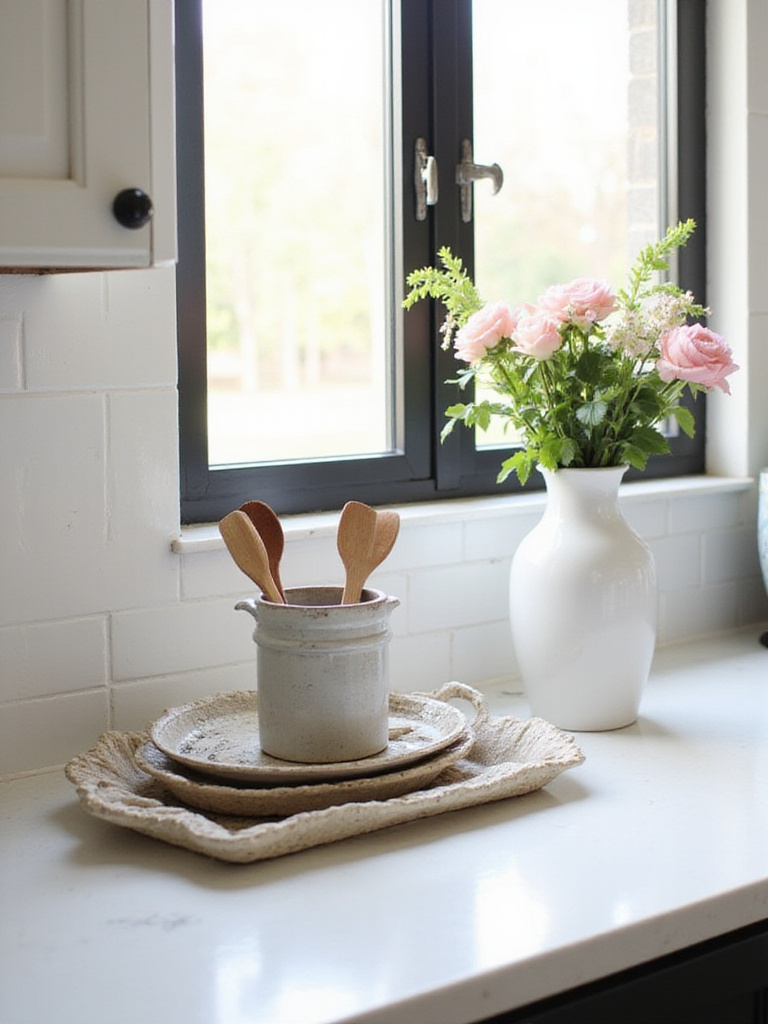
Successful layering begins with establishing anchor elements—larger items like cutting boards or plant containers that provide visual weight and stability. Medium-height elements like utensil crocks or small appliances create transitional layers, while small accent pieces like herb scissors or decorative stones add detail and visual completion. The interplay between organic plant forms and geometric manufactured items creates dynamic tension that keeps displays visually engaging.
The heritage technique gets a contemporary update through understanding how traditional composition principles apply to modern functional requirements and sustainable material choices.
The artisan collective that creates these pieces understands how personal collections tell stories about individual growing journeys and horticultural interests. Displaying meaningful plant-related collections—vintage seed packets, inherited garden tools, pressed flowers from significant gardens, or pottery from local artisans—transforms your kitchen into a personal museum that celebrates your connection to growing traditions. These personal elements make your kitchen countertop decor ideas uniquely yours while honoring the agricultural heritage that connects all cooking to growing.
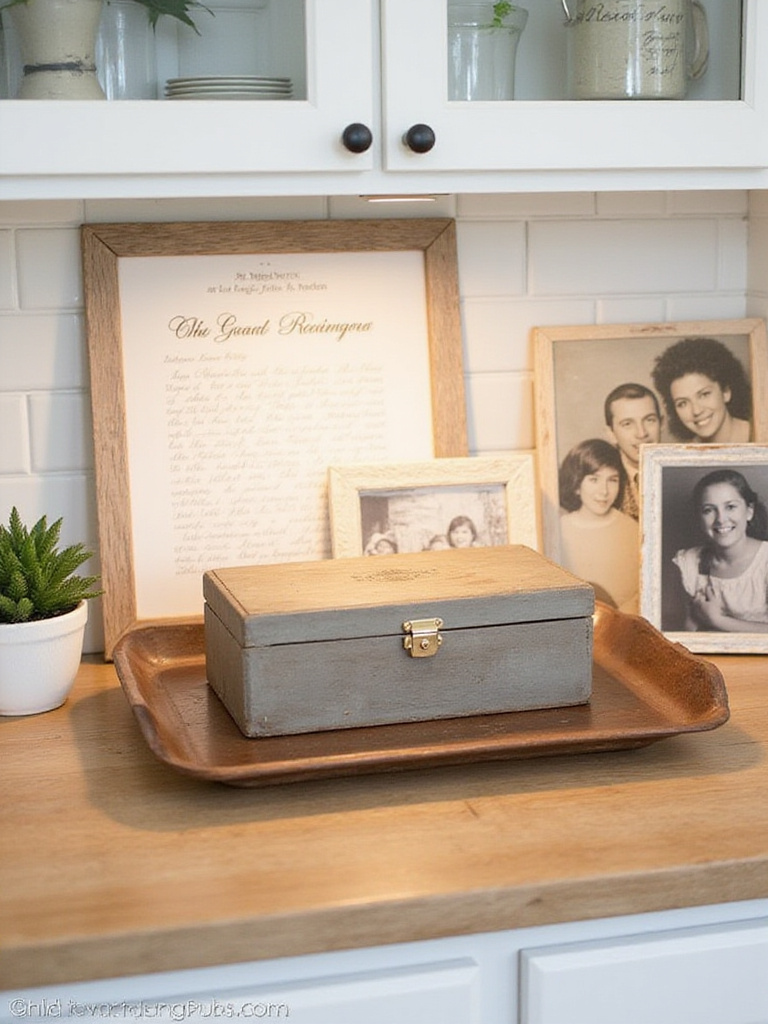
Vintage botanical illustrations, antique seed starting equipment, or collections of unique planters create focal points that reflect personal history and growing aspirations. The key lies in integrating these collections with functional elements so they enhance rather than impede daily kitchen activities. Small display areas for rotating seasonal collections allow you to showcase different aspects of your growing interests throughout the year.
The materials are sourced from a remarkable region where traditional growing knowledge meets contemporary sustainable practices, creating pieces that honor both heritage and innovation in plant cultivation and kitchen design.
While trendy, this element has staying power because statement plants provide the dramatic visual impact necessary to anchor kitchen design while serving essential air purification and psychological wellness functions. Large, architecturally significant plants—mature fiddle leaf figs, dramatic bird of paradise, or substantial herb trees—create immediate focal points that define kitchen character while providing substantial environmental benefits. These statement pieces can increase perceived room value by 5-10% while creating the biophilic connections essential for psychological well-being.
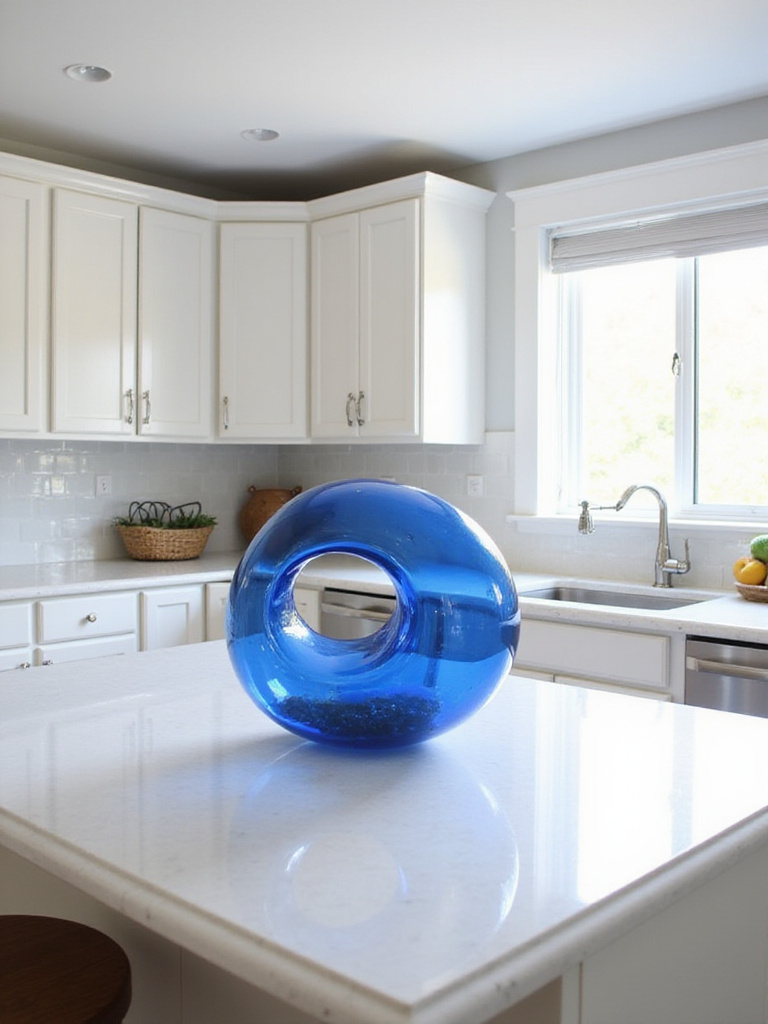
The selection of statement plants requires understanding your kitchen’s specific light, humidity, and space conditions to ensure long-term success. Large plants near windows can provide privacy screening while maintaining natural light, while substantial floor plants in corners create vertical interest without interfering with workflow. The investment in a quality statement plant pays dividends in air purification, visual impact, and the daily joy of tending a significant living element.
Unlike conventional options, this approach reduces the need for multiple smaller decorative elements while providing greater environmental benefits and creating more dramatic visual impact than scattered smaller plants.
The unexpected color story emerging this year celebrates the integration of natural plant colors with carefully selected manufactured elements that support rather than compete with botanical beauty. Developing cohesive color schemes that incorporate the changing hues of living plants requires understanding how natural colors shift with seasons, growth cycles, and lighting conditions. These dynamic color relationships create sophisticated kitchen countertop decor ideas that feel both intentional and organic.
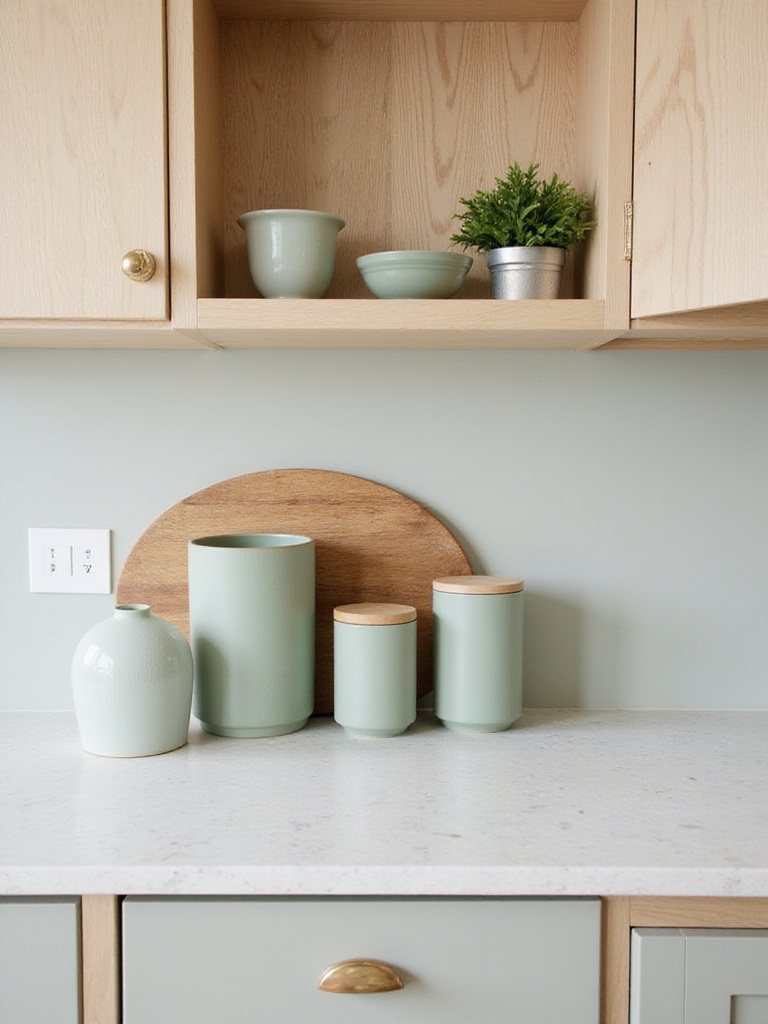
Natural plant colors—the deep greens of mature herbs, the silver-gray of succulents, the rich browns of natural wood containers—provide the foundation for color schemes that feel grounded and calming. Manufactured elements in complementary colors—ceramic containers in earth tones, metal accents in warm brass or copper, textiles in natural fibers—support rather than overwhelm the natural palette. The key lies in allowing plant colors to lead while manufactured elements provide subtle support and contrast.
The design language evolved from traditional patterns that honored the relationship between human-made objects and natural materials, creating harmony rather than competition between functional and living elements.
The third-generation workshop where this comes to life specializes in creating custom solutions that address the specific challenges of growing plants in kitchen environments. Developing personalized plant care systems—custom watering schedules, specialized growing containers, or integrated monitoring systems—demonstrates commitment to successful plant cultivation while creating unique kitchen countertop decor ideas that reflect individual growing expertise and environmental consciousness.
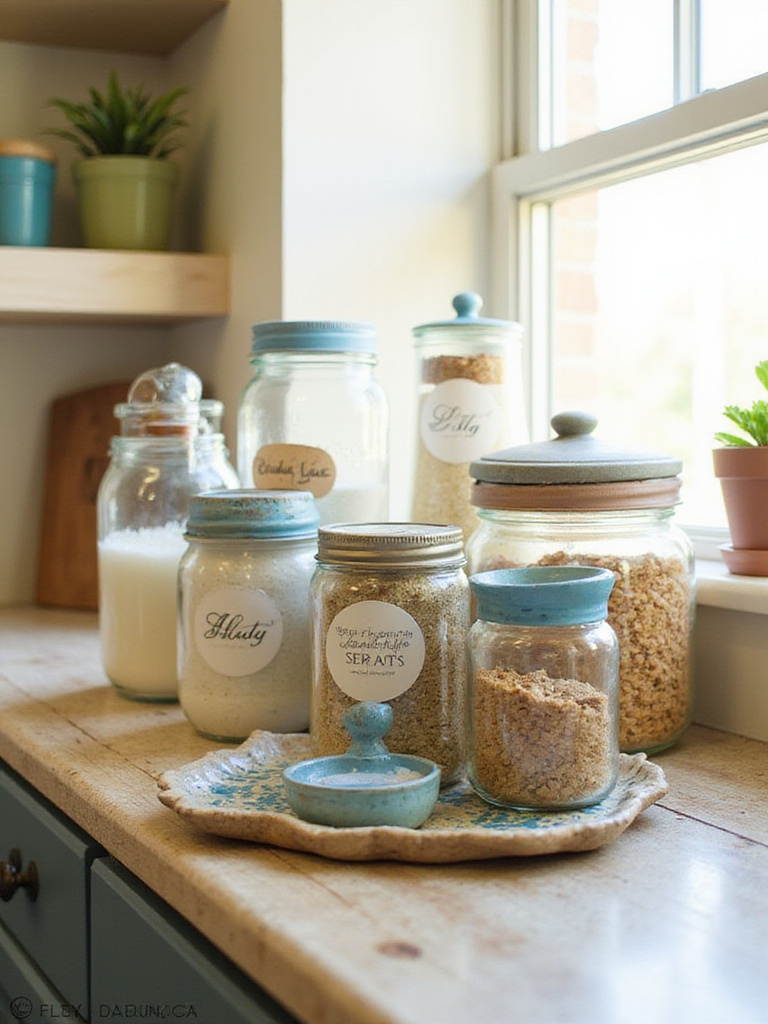
Custom solutions might include self-watering systems for herbs, specialized humidity trays for tropical plants, or integrated grow lights for year-round production. These systems demonstrate mastery of horticultural principles while creating functional beauty that supports both plant health and kitchen aesthetics. The investment in proper growing infrastructure ensures long-term success and reduces the maintenance burden of kitchen plant displays.
Even the offcuts from crafting these systems become something useful: composting materials for future growing projects and learning opportunities that deepen understanding of plant cultivation and sustainable living practices.
The forecast for next season already hints at the growing trend toward seasonal adaptation that honors natural growing cycles while maintaining year-round visual interest. Rotating plant displays and growing projects throughout the year creates dynamic kitchen countertop decor ideas that reflect seasonal availability, celebrate natural rhythms, and provide ongoing learning opportunities about plant cultivation and seasonal cooking. This approach can maintain visual novelty throughout the year while supporting sustainable growing practices.
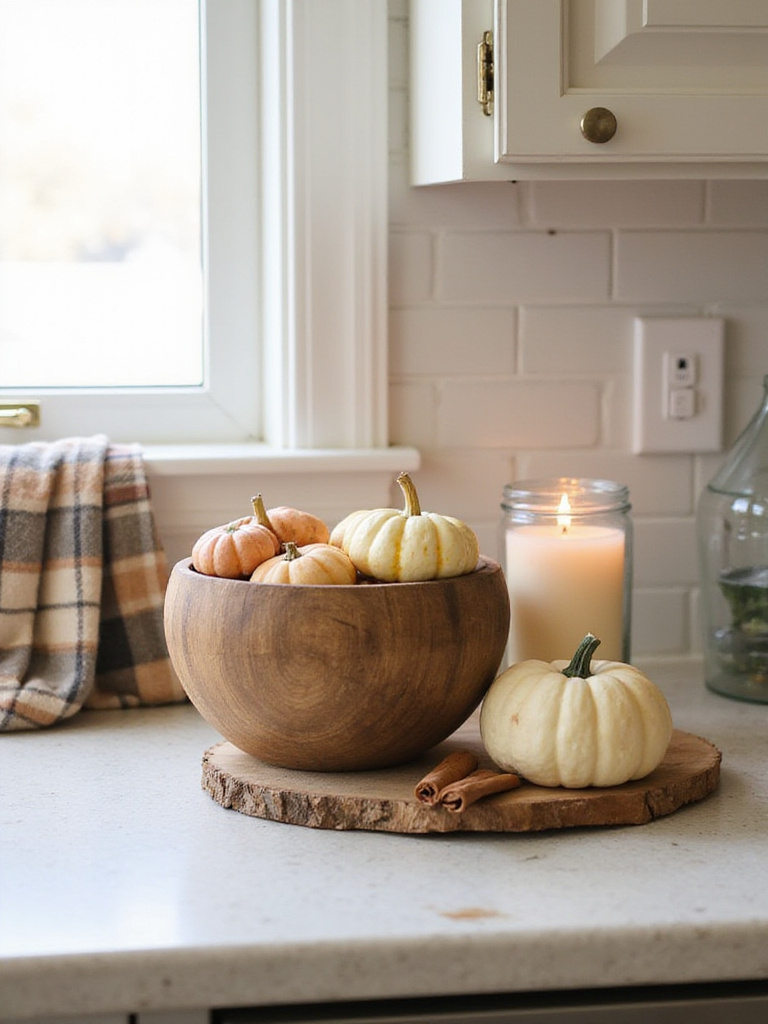
Spring displays might feature seed starting projects and early herbs, summer arrangements could showcase abundant harvests and flowering plants, autumn displays might emphasize preservation projects and hardy herbs, while winter arrangements could focus on indoor growing projects and preserved botanical elements. Each season offers unique opportunities to connect kitchen activities with natural cycles and growing opportunities.
The emotional response this evokes begins with recognition that successful growing requires patience, attention, and respect for natural timing—qualities that enhance both gardening success and cooking satisfaction.
Beyond the trends, the enduring appeal comes from technology solutions that support successful plant cultivation while maintaining the aesthetic appeal essential for kitchen integration. Smart growing systems—automated watering, LED grow lights with programmable cycles, or environmental monitoring devices—represent the cutting edge of kitchen countertop decor ideas that combine horticultural science with contemporary design. These systems can increase plant success rates by 60-80% while reducing daily maintenance requirements.
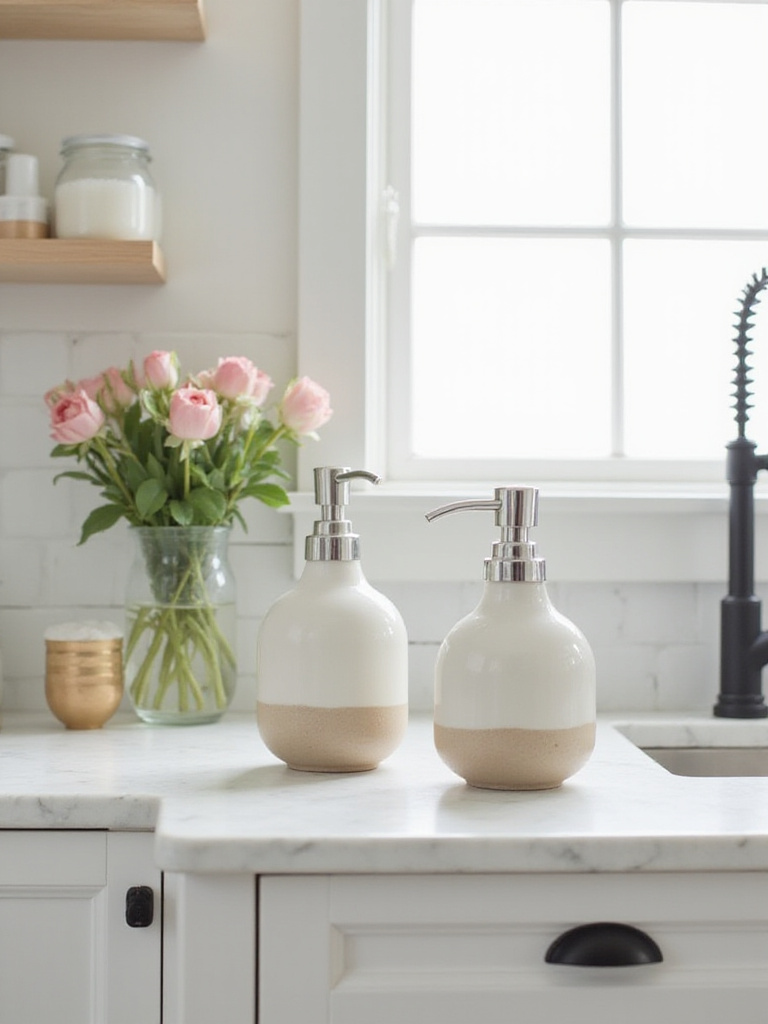
Modern growing technology allows even novice gardeners to successfully cultivate herbs, microgreens, and small vegetables in kitchen environments. Hydroponic systems, aeroponic towers, and smart planters with integrated sensors provide optimal growing conditions while maintaining clean, contemporary aesthetics appropriate for kitchen environments. The key lies in selecting systems that enhance rather than dominate kitchen design while providing reliable growing success.
When you run your hand across the finished surface of these integrated systems, you’re touching not just beautiful design, but the future of sustainable home food production and the integration of technology with natural growing processes.
Your kitchen countertops represent more than mere surfaces for food preparation—they offer opportunities to create living environments that support both culinary creativity and personal well-being. Through these 21 kitchen countertop decor ideas, we’ve explored how thoughtful integration of plants, sustainable materials, and functional beauty can transform ordinary kitchens into extraordinary growing spaces that nourish both body and spirit.
The journey from cluttered surfaces to curated botanical displays requires patience, attention to natural systems, and commitment to sustainable practices. Each element—from air-purifying plants to custom growing systems—contributes to environments that support healthy living while creating beauty that changes and evolves with natural cycles. These aren’t just decorative choices; they’re investments in lifestyle changes that promote wellness, environmental consciousness, and deeper connections to the natural world.
As you begin implementing these kitchen countertop decor ideas, remember that successful plant cultivation requires the same attention to detail and commitment to quality that characterizes excellent cooking. Start with one or two elements that resonate with your growing experience and lifestyle, then gradually expand your botanical displays as your confidence and expertise develop. Your kitchen can become a living laboratory where culinary arts and horticultural science combine to create spaces that truly nourish both body and spirit.